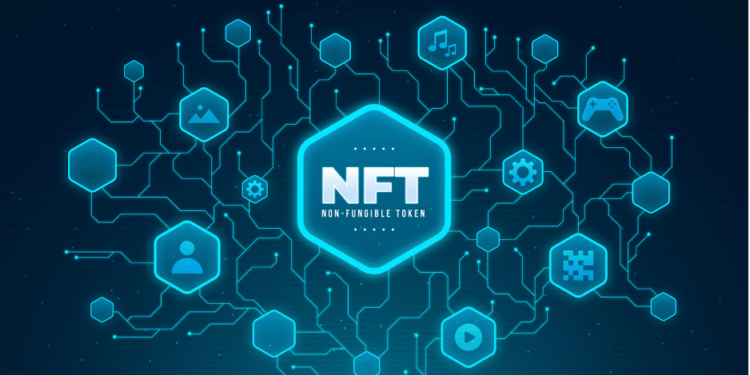The world of gaming has evolved rapidly, and the introduction of NFT game development software is transforming how games are created and monetized. NFT (Non-Fungible Token) games allow players to buy, sell, and trade digital assets that hold real-world value. In this guide, we’ll explore how to create an NFT game using the best NFT game development software, covering essential tools, strategies, and steps to get started.
What Is NFT Game Development?
NFT game development involves integrating blockchain technology into games, allowing players to own unique digital assets. These assets can range from characters, skins, weapons, or even virtual land, and are stored as NFTs on the blockchain, giving players ownership and the ability to trade or sell them for real money.
Read also Revolver News
1. Choosing the Right NFT Game Development Software
Selecting the best NFT game development software is crucial for building a successful game. Many platforms support the creation and integration of NFTs, but it’s essential to choose one that aligns with your game’s needs. Here are a few popular options:
a. Unity with Enjin SDK
Unity is one of the most widely used game development engines, and with the Enjin SDK (Software Development Kit), it’s easy to integrate NFT functionality into your game. This software allows developers to create in-game assets that players can own and trade.
- Fact: Enjin is responsible for launching over 2.3 billion digital assets and powers hundreds of NFT projects globally.
b. Ethereum with Solidity
Ethereum is the leading blockchain for NFTs, and developers often use Solidity, Ethereum’s programming language, to create NFT smart contracts. This method allows complete customization of your NFTs, but it requires solid coding skills.
c. Flow Blockchain with Dapper Labs
Flow is a blockchain specifically designed for NFTs and is home to popular NFT games like NBA Top Shot. It’s known for its scalability and user-friendly experience for both developers and players.
- Fact: Flow blockchain has processed over 3 million user accounts and 20 million transactions since its launch.
2. Creating NFT Assets for Your Game
NFT assets are what make your game stand out and offer value to players. These assets can be anything from character skins to rare weapons. Using NFT game development software, you can create these assets and assign them real-world value.
a. Designing Assets
Use graphic design tools like Blender or Photoshop to create unique digital assets. The rarity and uniqueness of these assets are what drive demand in the market.
b. Tokenizing Assets
Once the assets are designed, they need to be tokenized on the blockchain. This process involves creating a smart contract that defines ownership and uniqueness. For example, if you’re using Ethereum, you’ll write a smart contract using Solidity to assign each asset its own token ID.
Quote: “NFTs are changing the gaming landscape by giving players real ownership of in-game assets. It’s no longer just about playing; it’s about creating value.” – Anonymous
3. Integrating Blockchain into Your Game
After creating and tokenizing your assets, the next step is integrating the blockchain into your game. Most NFT game development software includes APIs that help link the game to a blockchain like Ethereum or Flow. This integration allows players to trade or sell their in-game assets on NFT marketplaces.
a. Smart Contracts
Smart contracts play a crucial role in NFT game development. They automate processes such as asset creation, transfers, and ownership. The Ethereum blockchain is widely used for deploying smart contracts.
b. NFT Wallets
To enable users to store and trade assets, integrating NFT wallets like MetaMask or Trust Wallet is essential. These wallets allow players to manage their assets securely and interact with the blockchain.
Latest Figures: According to DappRadar, the NFT gaming industry generated over $4.5 billion in transaction volume in 2023, demonstrating its immense growth potential.
4. Monetization Strategies for NFT Games
One of the most appealing aspects of NFT games is the monetization potential. Here are some popular strategies:
a. Play-to-Earn (P2E) Models
In a play-to-earn model, players earn cryptocurrency or NFTs by playing the game. These earned assets can then be sold on marketplaces, creating a steady income for players. Games like Axie Infinity have made millions using this model.
b. Asset Sales
Selling rare and exclusive NFTs as in-game assets can generate significant revenue. You can sell character skins, weapons, or other unique assets directly to players.
c. Royalties on Resales
NFTs allow developers to receive royalties every time an asset is resold. This feature provides ongoing income even after the initial sale of the NFT.
Latest News: In 2024, Star Atlas, a popular NFT game, implemented new features that allow players to earn royalties on their in-game assets, boosting player engagement and game popularity.
5. Marketing Your NFT Game
Once your game is developed, promoting it effectively is essential for success. Here are some strategies:
a. NFT Marketplaces
List your NFT game assets on popular NFT marketplaces such as OpenSea, Rarible, or Binance NFT. These platforms offer high visibility and access to millions of potential buyers.
b. Community Building
Engage with the NFT gaming community on platforms like Discord, Twitter, and Telegram. A strong, engaged community can drive your game’s success.
Fact: According to Statista, there were over 65 million active wallets on Ethereum in 2023, indicating the vast potential market for NFT games.
6. Ensuring Security and Scalability
Security is paramount in NFT game development, as players’ assets hold real-world value. Implementing robust security protocols for smart contracts and protecting users from potential hacks is crucial. Additionally, your game must be scalable to handle an increasing number of users and transactions.
a. Security Audits
Before launching, conduct thorough security audits of your smart contracts to identify any vulnerabilities. Third-party platforms like CertiK and Hacken provide blockchain security services.
b. Scalability Solutions
To avoid congestion and high gas fees, consider using layer-2 scaling solutions like Polygon or Immutable X, which reduce transaction costs and improve game performance.
Read more: Art of video game level design
Conclusion
Creating an NFT game requires a mix of creativity, blockchain knowledge, and the right NFT game development software. From designing digital assets to integrating blockchain and smart contracts, the process can be complex, but the rewards are immense. With the NFT gaming market rapidly expanding, now is the perfect time to dive into this exciting space. Remember, choosing the best NFT game development software, understanding monetization strategies, and ensuring scalability will set you up for success.














